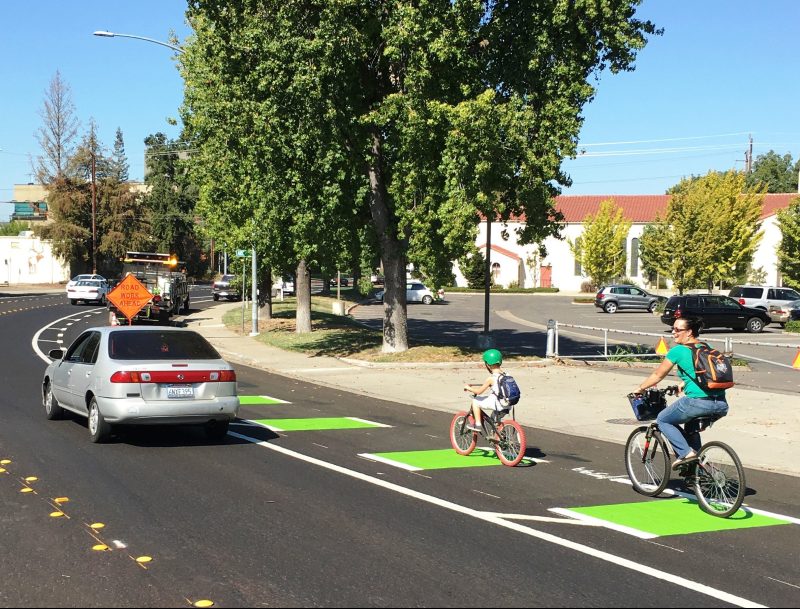Caltrans today announced it will grant $34.7 million for planning for sustainable communities. The grants will be awarded to cities and counties to begin or complete planning for resilience, to reduce greenhouse gas emissions, and sometimes just to get up to speed with state climate goals.
The grants come from state funding sources, including the Road Maintenance and Rehabilitation Account, funded by S.B. 1, and the State Highway Account, as well as federal sources for planning and transit.
Examples include:
- City of Eureka citywide bike facilities plan "to develop a cohesive, defined, and connected multimodal network ... that encourages mode shift, improves safe access to bikeways and walkways, and connects bicyclists to transit services."
- An Active Transportation Plan for the City of Lakeport, which currently does not have one.
- The City of Sacramento's Fifteen-Minute Neighborhoods Plan, which is "a community-driven planning process to create a citywide, connected network of traffic-calmed local streets that will connect to schools, parks, retail and transit."
- Yuba County's Bicycle and Pedestrian Mobility Plan for its unincorporated, and very rural, areas.
- In Santa Clara, a plan for bicycle and pedestrian access improvements at the Sunnyvale Caltrain station
- Sonoma County Active Transportation Plan, to "guide and prioritize expenditure of an estimated $3.1 million in annual revenues dedicated to bicycle and pedestrian facilities through Go Sonoma Act."
- Active Transportation Plans in Arroyo Grande, Salinas, Hanford, Fowler, Carson, Menifee, and others.
- The city of Parlier will conduct an Active Transportation Study using "tactical urbanism" to create pilot studies of traffic calming, safety improvements, and temporary bicycle lanes, "with the purpose of encouraging more residents to use alternative modes of transportation."
Other grants will fund the study of multimodal station access (Spring Street Station in La Mesa) and transit priority treatments ("On the Move," in San Diego, which also intends to deploy some tactical urbanism, which it calls "community-led short term, low-cost, and scalable interventions to provide benefits to people walking, biking, and taking transit particularly in disadvantaged and vulnerable communities").
Complete streets plans, multimodal corridor planning, and transportation demand management plans are also on the list of grant awardees. So is one plan to study "Advanced Air Mobility Services" in San Diego - which seems to be about drones and helicopters.
Plans for transitioning to zero-emission transit (Tahoe, Stanislaus, Shasta, and Plumas transit districts), including charging infrastructure (Sacramento region) and freight (central coast) will receive grants, as will several zero emission vehicle incentive programs. One of these, in Monterey, specifically includes e-bike incentives, but not all of them do.
There are also grants for at least one automatic transit passenger counting system and the development of a climate adaptation planning process to protect Alameda and the Oakland shoreline from sea level rise.
The San Bernardino County Transportation Authority, which will receive almost $600,000 from S.B. 1 funding, admits in its grant application. But it will do better!
"The SBCTA is entering a new era of transportation planning," says its grant application. "While SBCTA has had a Countywide Transportation Plan with multimodal and sustainability elements since 2015, these elements have not been fully integrated, nor has it kept up with major changes in policy. In particular, it has not been resilient enough to respond to disruptions seen over the last few years: COVID-19 pandemic, climate change, and changes in technology and travel that have ensued. It is now time to build a new foundation that will produce a Long Range Multimodal Transportation Plan (LRMTP) that will adapt and respond to these challenges."
Its new plan will "respond to new policy initiatives from the California Transportation Plan 2050 and the Climate Action Plan for Transportation Infrastructure" and that's a promise.






